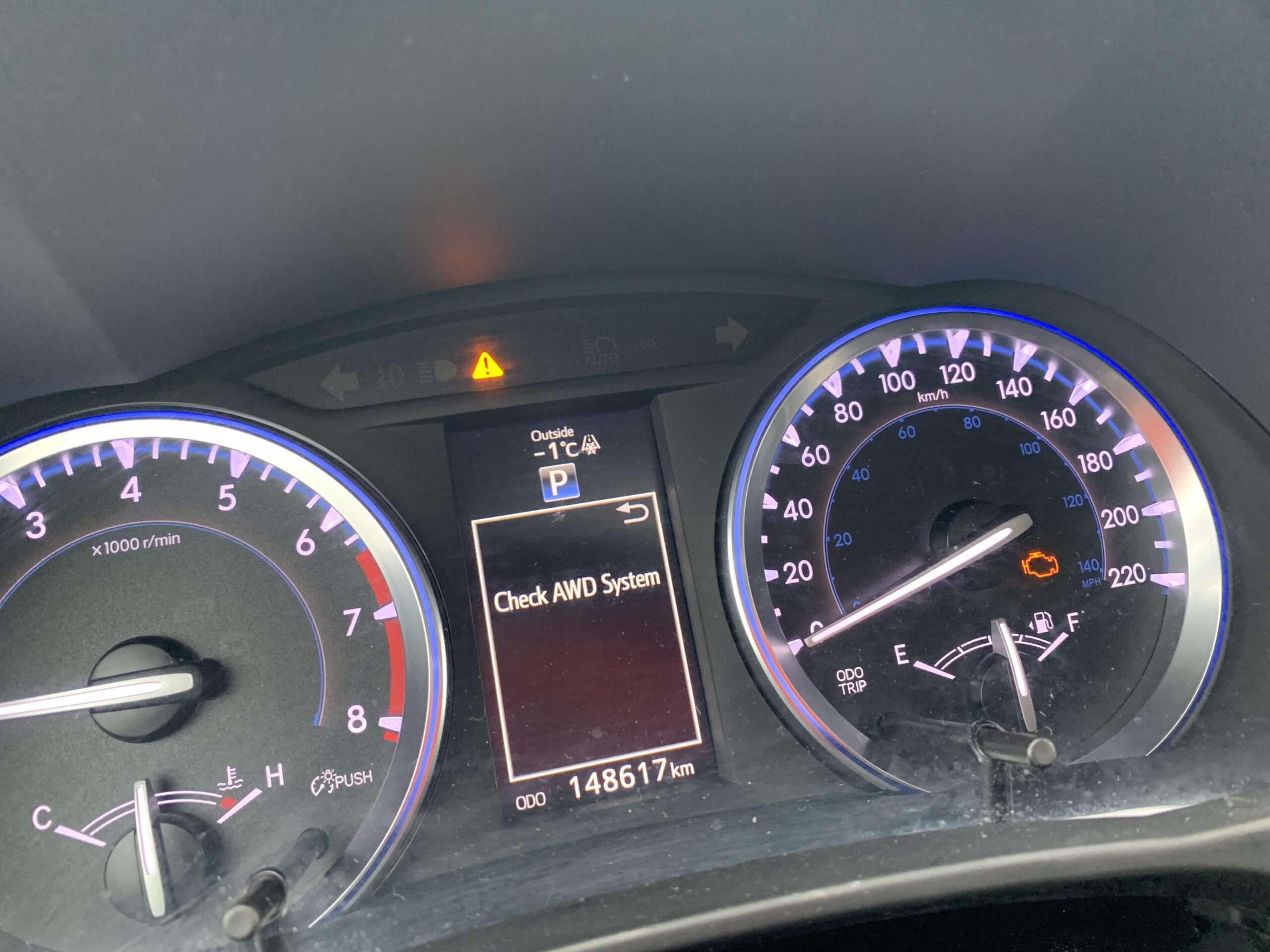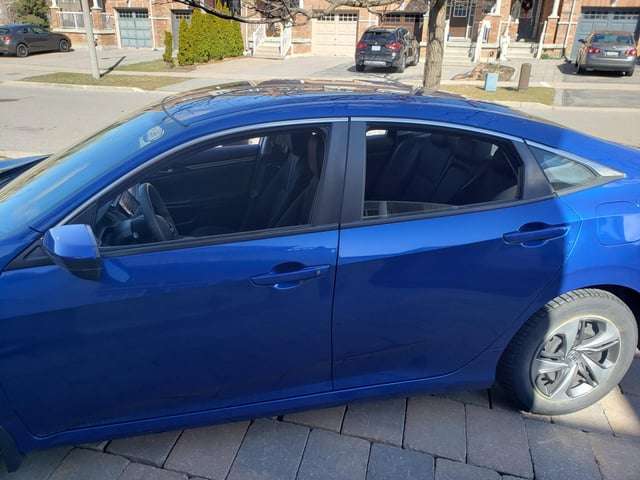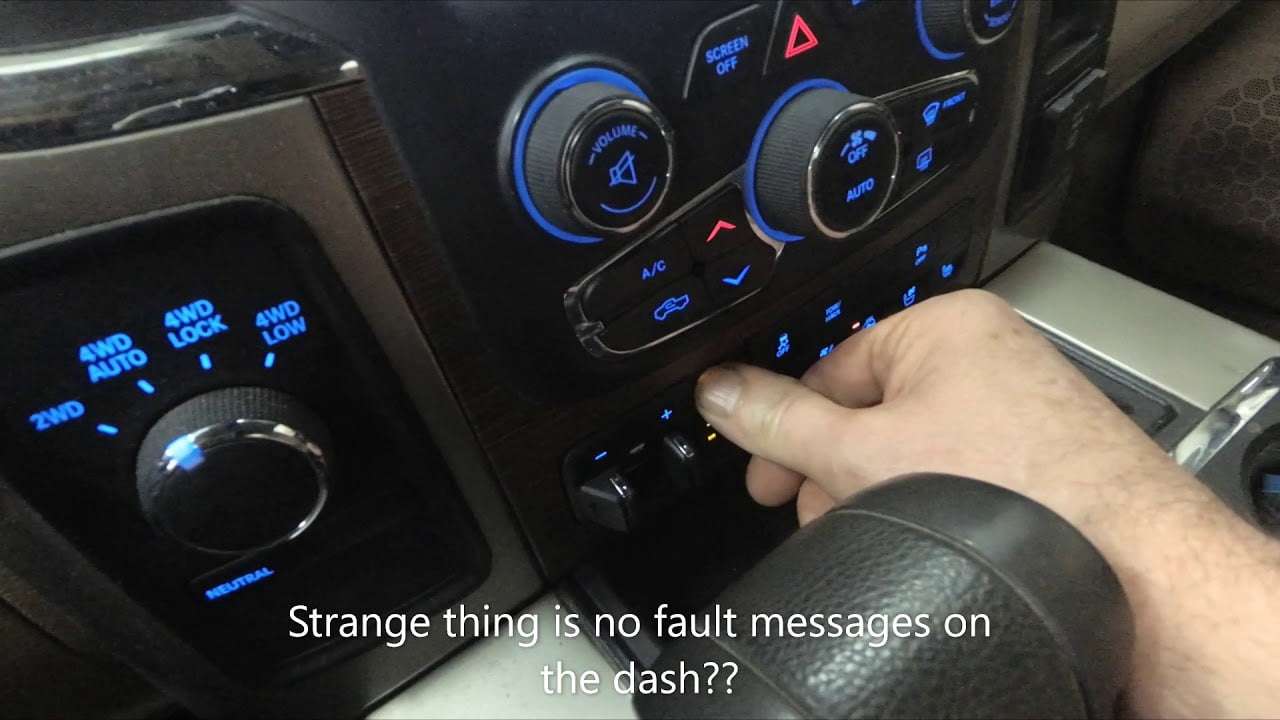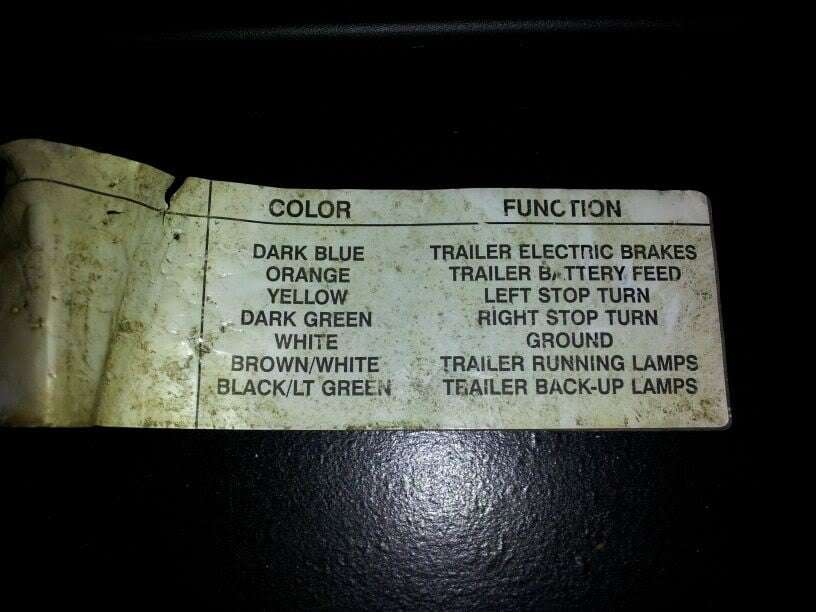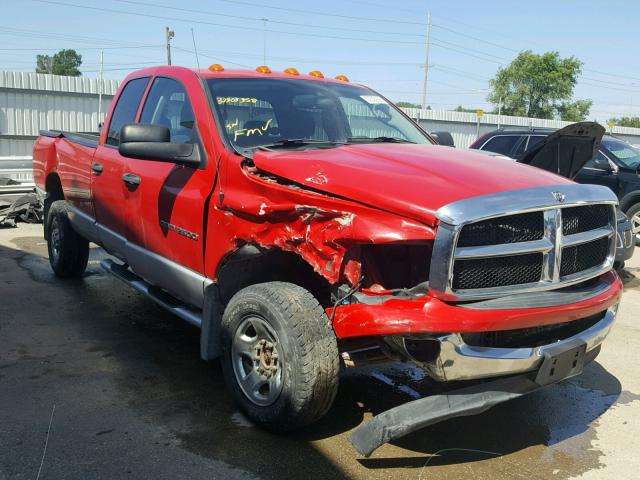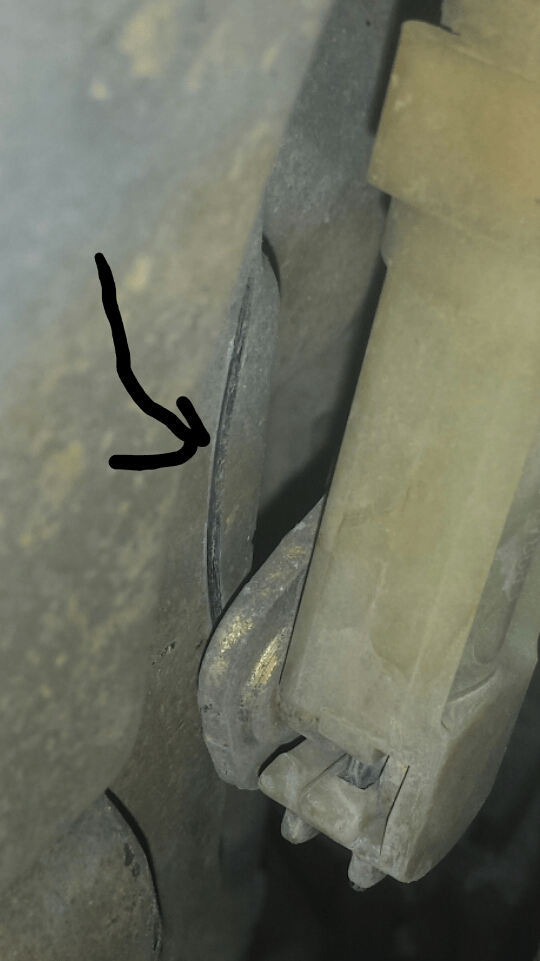The “Check AWD System” alert on a Toyota Highlander indicates a potential issue with the All-Wheel Drive system. This warning requires timely attention to maintain vehicle performance and safety.
The Toyota Highlander is a popular SUV known for its reliability and all-weather capability, largely attributed to its All-Wheel Drive (AWD) system.
Encountering the “Check AWD System” warning can be concerning for any driver.
This message is typically triggered by the vehicle’s onboard computer when it detects a malfunction or an operational hiccup within the AWD system.
Since the AWD system is pivotal for optimal traction and stability, addressing this alert promptly is crucial. It could indicate anything from a minor sensor issue to a significant mechanical fault.
Regular maintenance can often minimize such alerts; nevertheless, experienced hands should inspect the system to diagnose and rectify any problems.
Remember, tackling the issue early can help ensure your Highlander continues to navigate diverse terrains with ease.
Credit: www.reddit.com
Decoding The Check Awd System Alert
Seeing the Check AWD System alert on your Toyota Highlander’s dashboard can be unnerving.
AWD stands for All-Wheel Drive, a system that helps your vehicle grip the road better in various conditions.
This alert indicates something may not be working as it should in this intricate system.
Let’s decode what this message could mean and what actions you should consider taking.
The Awd System In Focus
The AWD system delivers power to all four wheels simultaneously, adjusting as needed for optimal traction.
Critical to navigating slippery or uneven terrain, it’s a complex web of components.
They include clutches, differentials, sensors, and the electronic controller. When everything works well, you enjoy a smooth, stable ride.
Common elements crucial to the system’s operation include:
- Torque Split Device: Manages power distribution.
- Differential: Helps the wheels turn at different speeds.
- Sensors: Monitor wheel speed and slip.
- Control Unit: Decides how power is transferred.
Trigger Points For The Warning Message
Various factors can trigger the ‘Check AWD System’ message. This alert should prompt a diagnostic check. A professional technician should investigate the cause.
Possible triggers include:
| Issue | Possible Cause |
|---|---|
| Low Fluid Levels | Differential or gearbox fluid needs topping up. |
| Worn Out Components | Mechanical wear in clutches or gears. |
| Electronic Glitches | Sensor failure or software hiccups. |
| External Factors | Damage from road debris or accidents. |
Addressing this warning promptly can prevent further damage.
Timely maintenance and repairs ensure your Highlander remains safe and reliable.
Credit: www.toyotanation.com
Common Causes Of The Awd System Alert
Seeing a ‘Check AWD System’ message on your Toyota Highlander can be unsettling.
Your Highlander’s All-Wheel Drive (AWD) system is key to providing traction and stability on the road. When the message appears, your car is telling you it needs some TLC.
Let’s look at typical triggers for this alert.
Sensor Malfunctions And Electrical Issues
Sensors are like the car’s eyes and ears for the AWD system. They monitor wheel speed and control, helping your car grip the road better.
But like any electronic gadget, they can glitch. Electrical problems can also cause false alarms or signal issues.
- Wheel speed sensors could be dirty or damaged.
- Wiring harnesses might be corroded or frayed.
- Control modules could have software snags needing updates.
Fluid Levels And Viscosity Concerns
Think of fluids as the lifeblood of the AWD system. If levels dip or the fluid gets too thick, your car won’t perform at its best.
Regular checks ensure everything runs smoothly.
| Part | Check For |
|---|---|
| Transmission Fluid | Right level and condition |
| Differential Fluid | Leaks or quality issues |
Mechanical Wear And Tear
Over time, parts wear out. It’s natural. Mechanical components in the AWD system are under stress every time you drive.
Regular wear can lead to bigger problems without proper care.
- Check for worn-out clutches in the AWD system.
- Inspect gears and bearings for damage.
- Look at drive shafts for any signs of distress.
Diy Diagnostic Steps
Seeing a “Check AWD System” warning on your Toyota Highlander can be unsettling. But fear not; some initial diagnostic steps can be done at home.
This part of the blog guides you through simple checks that you can perform yourself to understand what might be causing the alert in your vehicle’s all-wheel-drive system.
Reading Error Codes With An Obd-ii Scanner
Plugging an OBD-II scanner into your Highlander can unveil specific fault codes. These codes help identify the issue.
Follow these steps:
- Locate the OBD port under the dashboard near the steering wheel.
- Turn the ignition to ON to power up the vehicle’s diagnostics.
- Connect the scanner and wait for it to communicate with the car’s computer system.
- Record the codes displayed on the scanner.
- Refer to a reliable source for code interpretation.
Visual Inspection Of Awd Components
Next, a visual check can reveal obvious problems without any special tools. Inspect these:
- Driveshafts for damage or wear.
- Connecting joints and boots for tears or leaks.
- Wiring harnesses for any disconnections or damage.
A quick look could save you time and money if a simple issue is detected.
Checking Transmission And Differential Fluids
Low or contaminated fluids can cause AWD issues. To check them:
| Component | Check Method | Desired Condition |
|---|---|---|
| Transmission Fluid | Use the dipstick with the car on a level surface. | Fluid should be pinkish and not have a burnt smell. |
| Differential Fluid | Check the level plug on the differential casing. | The fluid should be at the proper level and clean. |
Consult your vehicle’s manual for specifics on how to check these fluids.
When To Seek Professional Help
When the dashboard of your Toyota Highlander lights up with the message “Check AWD System,” it signals a possible issue with the all-wheel-drive mechanism.
Knowing when to contact a professional can save you time and prevent more significant damage to your vehicle.
Here’s what to watch for and how expert repair shops can help.
Symptoms Indicating A Serious Issue
Various signs may suggest the AWD system needs a thorough checkup:
- Warning lights on the dashboard stay illuminated.
- Strange noises coming from under the vehicle.
- A noticeable decrease in traction or handling.
- The vehicle struggles to shift gears smoothly.
- An odd feeling in the steering wheel during turns.
If you notice these symptoms, seek professional help promptly to avoid further damage.
Services Offered By Auto Repair Shops
Professional auto repair shops provide a breadth of services to diagnose and fix AWD system issues:
| Service | Description |
|---|---|
| Diagnostic Testing | Identifies error codes and underlying problems. |
| AWD Repair | Addresses specific mechanical or electrical issues. |
| Fluid Check & Replacement | Ensures proper lubrication and function of AWD components. |
| Part Replacement | Adjust the AWD system for optimal performance. |
| System Calibration | Adjusts the AWD system for optimal performance. |
Contact a trusted auto repair shop when you experience any harsh AWD system symptoms. Regular maintenance can prevent costly future repairs and ensure a safe driving experience.
Preventative Measures And Maintenance Tips
Seeing ‘Check AWD System’ on your Toyota Highlander’s dashboard can be worrying.
Your car’s All-Wheel Drive system needs attention. Prevent issues with regular maintenance. Extend your AWD system’s lifespan with these easy-to-follow measures and tips.
Routine Checks For Awd System Health
Maintain your AWD’s health with consistent check-ups. Regular inspections prevent unexpected failures. Notice problems before they worsen.
These steps help keep your AWD system in peak condition:
- Check fluids: Ensure the AWD’s oil level is correct. Change the oil as recommended by Toyota.
- Inspect tires: All tires must match in size and wear level. Rotate them to even out wear patterns.
- Listen for noises: Grinding or whirring from the AWD hints at potential issues.
- Review dashboard alerts: Heed any warnings related to the AWD system promptly.
Driving Habits To Prolong Awd System Life
Adopt smart driving habits for lasting AWD function. Proper usage can extend the life of your vehicle’s crucial systems.
Ensure your Highlander stays reliable:
- Avoid hard accelerations: Gentle starts reduce drivetrain stress.
- Skip the heavy load: Lighten your load to lessen the burden on your AWD system.
- Be gradual on turns: Sharp turns put extra pressure on your AWD components.
- Stay on the road: Regularly driving off-road can wear down the AWD system faster.

Credit: www.toyotanation.com
Impact Of Awd Malfunction On Driving Safety
Driving a Toyota Highlander with AWD (All-Wheel Drive) offers peak performance and safety. An alert such as Check AWD System signals a potential issue.
This directly impacts driving safety. Problems with the AWD system can alter handling and increase risk on the road.
Handling And Control Considerations
Optimal handling and control are critical for driver safety. The AWD system provides distributed power to all four wheels.
This helps the Highlander maintain better grip and balance. When the AWD malfunctions, the vehicle may not respond as expected.
You might experience:
- Reduced traction in adverse conditions
- Unexpected wheel slippage
- Poorer cornering capabilities
Stability on wet or icy surfaces can significantly decrease. These changes affect the driver’s confidence and vehicle safety.
Adapting To Compromised Awd Functionality
When facing compromised AWD, drivers must adapt for continued safety. Key adaptations include:
- Slower speeds, especially in poor weather
- Increased following distances
- Gentle acceleration to prevent wheel spin
Regular maintenance can prevent AWD issues. But if the Check AWD System light appears, immediate action is crucial.
An authorized Toyota service center can diagnose and fix underlying issues.
Maintaining the integrity of the AWD system ensures the safety of all occupants and optimal vehicle performance.
FAQs: What Does Check AWD System Mean On Toyota Highlander
What Does Awd System Warning Light Mean?
The AWD system warning light indicates a potential issue with the All-Wheel Drive system. It requires diagnostic attention to ensure optimal vehicle performance and safety.
What Is The Awd System On A Toyota Highlander?
The AWD system on a Toyota Highlander is an all-wheel drive feature that enhances traction and stability by distributing power to all four wheels as needed.
What Causes Awd Malfunction?
AWD malfunction can result from faulty sensors, damaged differentials, worn transfer cases, or issues with the drivetrain. Regular maintenance helps prevent these problems.
Is Awd In Highlander Always On?
Yes, the Toyota Highlander with All-Wheel Drive (AWD) has an always-on AWD system that automatically manages power distribution for optimal traction.
Conclusion
Understanding the ‘Check AWD System’ alert in your Toyota Highlander is crucial for maintaining your vehicle’s performance.
This warning highlights potential issues with the all-wheel drive mechanism, urging prompt inspection.
Regular check-ups and immediate attention to such alerts can prevent more significant problems, ensuring a smooth and safe driving experience.
Remember, keeping your Highlander in top condition means staying alert to what your car tells you.
